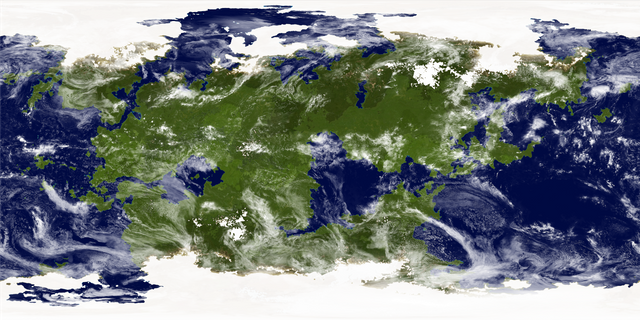A Random World History Simulator Part 1/?
It's been ages since I posted anything on Steemit. There's various reasons of IRL commitments, etc., but at the end of the day I must also admit I'm just another one of those people who tends to drift from half-finished project to half-finished project. I've got a few long-term projects I do hope to bring to completion someday, but it's kind of a rat race where every project that's gotten to even a semi-finished state has left behind a dozen others that never got past the initial drafts.
So, having acknowledged that, I'd like to write some stuff about my latest project, without any promises or commitments it will ever get much beyond the (already quite extensive) level of development it's at now.
This is an attempt to build a random world history simulator.
A while ago I ended up reading the same article my friend @mathowl mentioned in this post. And just like @mathowl it inspired me to try and build something on it.
To recap, for those who have enough to read already: the article, titled "War, space, and the evolution of Old World complex societies" is an attempt to build a model to test an hypothesis about what factors influenced the evolution of complex societies in human history (in layman's terms we tend to refer to this as 'civilization'). It understands complex societies as the result of the (cultural) accruement of so-called 'ultra-social traits'.
What the paper is trying to support via its model is a four-point hypothesis:
That ultra-social traits are by themselves evolutionarily detrimental to the society that develops them. I.e. in isolation there is natural selection against ultra-sociality, meaning for any community the chance of losing ultra-social traits is larger than the chance of gaining them.
That the reason why ultra-sociality nevertheless develops, is because while detrimental in isolation, ultra-sociality is advantageous when there is competition between different communities. The development of ultra-sociality allows communities to defeat and conquer other communities, forming polities, and in the process of conquest the conquering communities spread their ultra-sociality to the vanquished.
The key factor that allows this process to drive the evolution of high ultra-sociality is the discovery of certain (military) technology. These technologies lead to war becoming more decisive, which increases the ability of victorious communities to convert vanquished communities to their way of life. (One thing to note is that though the paper uses the somewhat scary term ethnocide, it's fairly neutral on how conversion actually happens. The conversion process could be taken to represent a violent and bloody expulsion and resettlement, but it could just as well be representing defeated peoples freely choosing to adopt and emulate some of the practices of their conquerors. And, of course, history shows us plenty of examples of both these processes happening, as well as lots of things in-between.)
On Earth, the origin of these 'decisive' military technologies was the steppes, and they are considered to have primarily been horse-related military advancements (from chariots to stirrups and so on). In this manner, the diffusion of military technology from the Eurasian steppes outwards can explain why certain areas adjacent to the steppes were the first to develop complex societies.
Now, having explained all that, I want to make clear that my own interest here is not whether this is an accurate model for the sociological and archaeological history of humanity. I've got some background in these fields, but my own area of expertise is several degrees of separation removed from what the authors of this article are discussing, so I'm far from qualified to judge the scientific merits.
I'm approaching this model from a creative perspective, particularly with an interest in not just history, but also fantasy and science fiction.
If I'd stumbled across this article a year or more earlier, I probably would've skimmed it and thought nothing more of it. But in the past year, I've spent, as part of one of those other half-finished projects, some time learning how to make pretty cool maps using a combination of map-making programs such as ProFantasy's Fractal Terrains and Wilbur. Here's an example of the kind of stuff I've learned to make:
Pretty cool, if I say so myself! And it's not just an image, but comes complete with climate and height data and so on. That is why when reading the article, I realized the way the model works, it could easily be run on non-Earth maps of the kind I knew how to make fairly consistently.
That is how the idea came about of using the model as a starting point to create a simulator that could outfit these worlds I was creating with their own, dynamically and evolutionarily generated, cultural and political history.
Next up: Forays into programming...

I'm curious what comes next!
Thanks! Since this was kind of short, I've gone straight ahead and posted Part 2.
This post has been voted on by the SteemSTEM curation team and voting trail. It is elligible for support from @curie and @minnowbooster.
If you appreciate the work we are doing, then consider supporting our witness @stem.witness. Additional witness support to the curie witness would be appreciated as well.
For additional information please join us on the SteemSTEM discord and to get to know the rest of the community!
Please consider using the steemstem.io app and/or including @steemstem in the list of beneficiaries of this post. This could yield a stronger support from SteemSTEM.